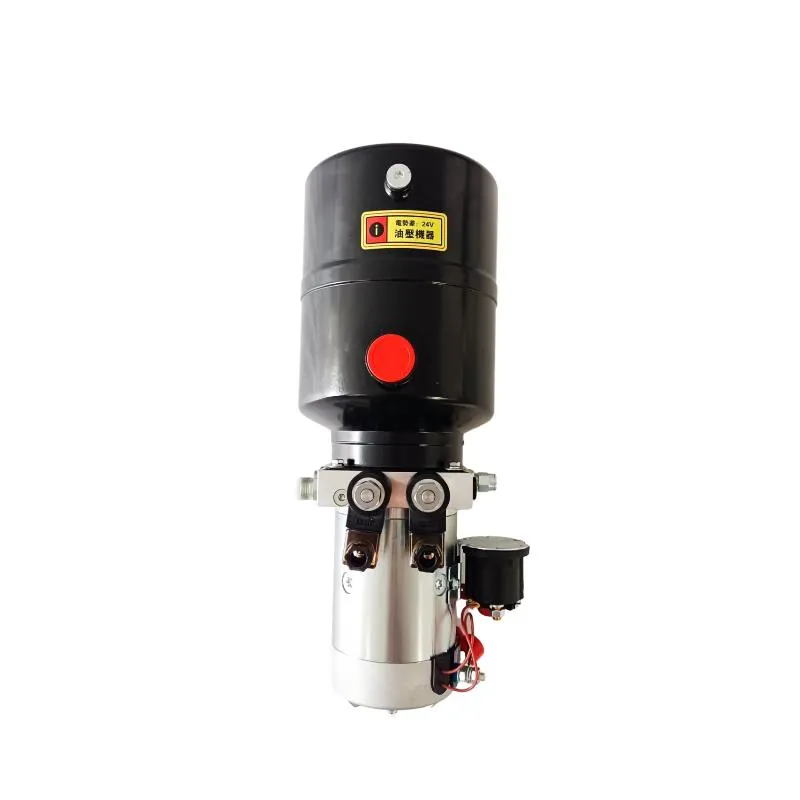Nov . 19, 2024 08:50 Back to list
tie rod type hydraulic cylinder product
The Tie Rod Type Hydraulic Cylinder A Comprehensive Overview
Hydraulic cylinders play a pivotal role in various industrial applications, providing the force necessary to lift, push, or pull heavy loads with ease and precision. Among the various designs available, the tie rod type hydraulic cylinder stands out for its robustness, versatility, and ease of maintenance. This article delves into the intricacies of tie rod hydraulic cylinders, examining their structure, functionality, applications, and benefits.
Structure and Design
The tie rod type hydraulic cylinder is characterized by its unique construction, which consists of a cylindrical barrel, end caps, a piston, and tie rods. The barrel is typically made from high-strength steel to withstand high pressure. The tie rods, which run parallel to the cylinder's axis, connect the end caps to the barrel, ensuring structural integrity and preventing deformation under pressure. This design not only provides additional strength but also allows for easy assembly and disassembly.
The piston is housed within the barrel and moves back and forth as hydraulic fluid is introduced or expelled. As the hydraulic fluid enters one side of the piston, it generates pressure that forces the piston to move, thereby creating linear motion. The simplicity of this design translates into reliability, making tie rod cylinders an excellent choice for a wide range of applications.
Functionality
The operation of tie rod hydraulic cylinders is relatively straightforward. When hydraulic fluid, usually oil, is pumped into the cylinder, it exerts pressure on the piston, causing it to move. The force generated is proportional to the area of the piston and the pressure of the hydraulic fluid. This feature allows for precise control over the output force and speed, making it suitable for applications that require accurate positioning and powerful lifting capabilities.
Moreover, the tie rod design facilitates a high stroke length in relation to the overall cylinder length, making it desirable for applications requiring substantial travel distance
. Additionally, tie rod cylinders typically possess a higher load capacity, allowing them to handle demanding tasks while maintaining stability and reducing the risk of failure.tie rod type hydraulic cylinder product

Applications
Tie rod hydraulic cylinders are employed across various industries including construction, manufacturing, and agriculture. In construction, they are used in heavy machinery such as excavators and cranes, where they perform tasks like lifting and moving materials. In manufacturing, they can be found in presses and automated assembly systems, where precision is crucial. Agriculture also benefits from tie rod cylinders, as they are used in tractors and other farm equipment to assist with tasks such as tilling and lifting heavy loads.
Their adaptability extends to specialized applications, such as in mobile machinery, where space constraints necessitate a compact yet powerful design. The ability to customize these cylinders according to specific requirements further enhances their utility across diverse fields.
Advantages
One of the main advantages of tie rod hydraulic cylinders is their ease of maintenance. The simple design allows users to easily access internal components for inspection and repair. Moreover, tie rod cylinders are generally less expensive to manufacture compared to other types, making them a cost-effective solution for many businesses.
The robust construction minimizes the risk of hydraulic leaks and failures, maximizing uptime and efficiency in industrial processes. Their capacity to handle high pressures and varying temperatures also contributes to their reliability, ensuring consistent performance under challenging conditions.
Conclusion
In conclusion, tie rod type hydraulic cylinders are an essential component in numerous industrial applications, thanks to their robust design, reliability, and versatility. Whether in construction, manufacturing, or agriculture, these hydraulic cylinders provide efficient and powerful solutions to various challenges. Understanding their structure and functionality is crucial for businesses looking to harness the full potential of hydraulic technology in their operations. With ongoing advancements in hydraulic engineering, tie rod cylinders are sure to remain a vital asset in the industrial landscape for years to come.
-
Fork Lift Power Units - Hebei Shenghan | Efficiency, Reliability
NewsJul.13,2025
-
1.5-Ton Turbocharged Cylinder-Hebei Shenghan|Hydraulic Solution,Energy Efficiency
NewsJul.13,2025
-
Auto Hoist Power Units-Hebei Shenghan|Efficiency&Industrial Lifting
NewsJul.13,2025
-
Double Acting Power Units-Hebei Shenghan|Hydraulic Solutions,Industrial Efficiency
NewsJul.13,2025
-
1.5 Ton Lifting Cylinder 70/82-40-290-535 - High-Performance Hydraulic Solution | Hebei Shenghan
NewsJul.13,2025
-
Fork Lift Power Units - Hebei Shenghan | Efficiency&Reliability
NewsJul.13,2025
